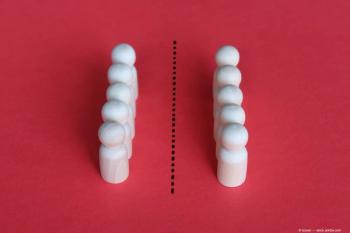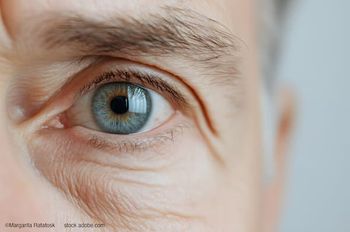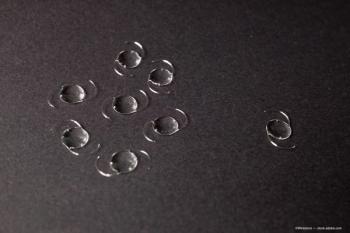
Premium performer: Phacoemulsification unit designed for enhanced safety and efficiency
The WhiteStar Signature Pro (J&J Vision) offers a diverse range of novel technologies that blend together to make cataract surgery easier, safer, and more efficient, according to Steven H. Dewey, MD.
The WhiteStar Signature Pro (J&J Vision) offers a diverse range of novel technologies that blend together to make cataract surgery easier, safer, and more efficient, according to Steven H. Dewey, MD.
Colorado Springs, CO-Advances in IOL technology, femtosecond lasers, and new diagnostics have taken center stage in recent discussions about cataract surgery. But while surgeons turn their attention to how they might incorporate these developments to achieve better outcomes, they should not forget that the phacoemulsification system they use also matters.
With that in mind, there are many reasons to choose the WhiteStar Signature Pro (J&J Vision), according to Steven H. Dewey, MD.
“The WhiteStar Signature Pro is the cornerstone of our operating room because
Power control
The system’s foot pedal control of ultrasound delivery is one of its valuable features. In contrast to the performance of other phacoemulsification systems where power increases linearly as the foot pedal is depressed, with WhiteStar the relationship between these two variables is more logarithmic. Power increases incrementally with initial foot pedal depression and only increases significantly if the surgeon exerts deliberate pressure.
This profile provides a safety advantage because it minimizes the potential for exposing the eye to more ultrasound than is needed to remove the cataract, said Dr. Dewey.
“If I want to increase the duty cycle during the procedure, I don’t have to be concerned that while concentrating on what is going on in the eye, I will push down too hard on the foot pedal and overshoot my target,” he explained.
The system’s foot pedal behavior in position 3 also makes surgery itself and machine set up easier.
“With WhiteStar technology, I haven’t found a need to program in different settings based on preoperative clinical assessments of nuclear density, which are not always accurate. Instead, when operating with WhiteStar, I determine density once I am inside the eye based on the activity at the phaco needle tip. Then, guided by my assessment, I use the foot pedal to achieve the power that is needed,” Dr. Dewey said.
“I find operating this way is a lot of fun, and because one setting functions well for all cataract densities, setup is simpler for the OR staff and there is less potential for input errors.”
Efficiency and safety
WhiteStar’s elliptical ultrasound technology (ELLIPS FX) is another one of its attractive features, said Dr. Dewey.
Not only does the combination of longitudinal and transversal movements provide efficient cutting, but it minimizes the potential for the tip to become fully occluded by a solid plug of nuclear fragment.
If occlusion occurs, WhiteStar’s occlusion sensing technology is always working in the background. continuously monitoring vacuum levels, anticipating pressure changes, and responding quickly to occlusion breaks to maintain IOP, Dr. Dewey said.
“Removing a fairly large nuclear fragment is straightforward using the ELLIPS FX handpiece, but the likelihood of absolute occlusion that might result in post-occlusion surge is reduced because of the side-to-side motion. While the phaco power is conforming the fragment to the opening of the needle tip, the automatic occlusion sensing technology is operating, anticipating when occlusion will break and resetting vacuum to a lower level so that the chamber does not evacuate,” he explained.
“The result is safer surgery with far less postocclusion surge. This reduces the potential for the phaco tip to engage iris or capsule because the pupil has contracted or the chamber shallowed.”
Dual-pump benefits
Dual-pump fluidics is another attribute of the WhiteStar Signature Pro because it gives individual surgeons the ability to tailor pump choice to their personal preference or the flexibility to harness the strengths of both the Venturi and peristaltic modes at different stages of the procedure.
Dr. Dewey said, however, that he tends to rely on the Venturi pump throughout the procedure because it increases efficiency when removing nuclear fragments and is superior to the peristaltic pump for achieving complete viscoelastic removal.
“Peristaltic vacuum is great for those big, chunky nuclei or segments that require a higher level of vacuum to segment into smaller fragments. But, because of the phantom-like nature of viscoelastic, it is not possible to achieve effective occlusion of the I&A handpiece that is necessary for vacuum to build when operating with a peristaltic pump. Therefore, viscoelastic essentially has to be removed with flow,” he explained.
“With the Venturi pump, vacuum rises independent of occlusion, and so much more effective force is delivered at the I&A tip for removing viscoelastic.”
Because there is always full vacuum when using a Venturi pump, there is also greater followability of nuclear fragments. As a result, surgery becomes easier and also safer when operating on eyes with small pupils.
“In any eye, and particularly in a small pupil case, it is necessary to keep the needle in the center of the pupil to avoid engaging the iris. When operating with a peristaltic system, however, there can be a lot of fishing around in the anterior segment for fragments,” said Dr. Dewey.
“Using the Venturi pump, the pieces come to the phaco tip much easier than when operating with a peristaltic system.”
To further facilitate the system’s performance, Dr. Dewey said he uses a needle with a thinner lumen (Packard/Dewey radius tip, MicroSurgical Technologies) that acts as a flow restrictor to mechanically harness Venturi vacuum. The thinner wall of the needle improves irrigation into the eye over a standard needle with a similar lumen.
Disclosures:
Steven H. Dewey, MD
E: [email protected]
Dr. Dewey is a consultant to J&J Vision. He receives royalties from MicroSurgical Technologies for the Dewey Radius Tip.
Newsletter
Don’t miss out—get Ophthalmology Times updates on the latest clinical advancements and expert interviews, straight to your inbox.



















































.png)


